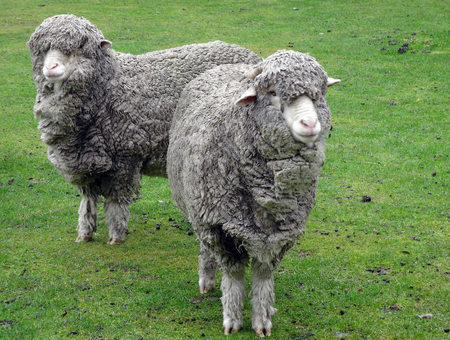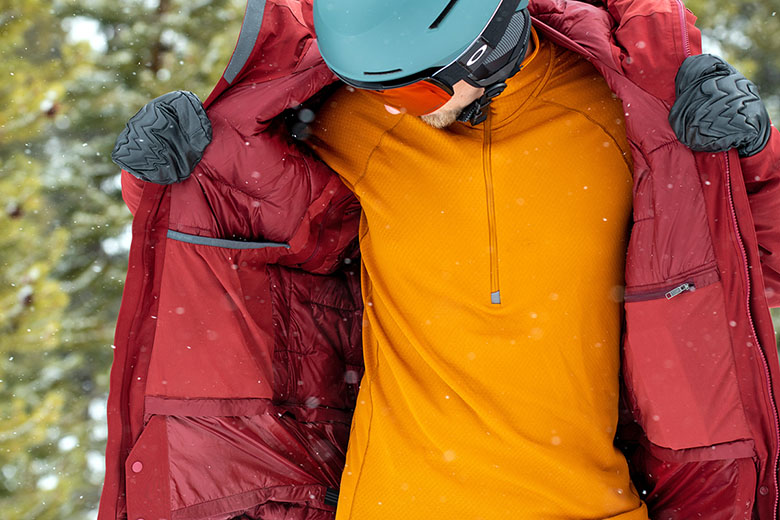There are numerous Merino breeds of sheep. Each one has its own distinctive characteristics. Here are some of the most well-known Merino sheep breeds and the ways in which they differ. Spanish Merino- The Spanish Merino is among the oldest breeds of Merino sheep, and is renowned for its high-quality wool and high yield. This breed is adaptable in every kind of environment and it has a high resistance against diseases.
American Merino - The American Merino was developed in the United States during the 19th century. It is famous for its fine and strong wool. This breed is particularly well-suited for cold conditions and is immune to many common sheep diseases.
Saxon Merino - The Saxon Merino Merino, a highly-trained Merino lamb breed, is famous for its exceptional softness and its fine wool. This Merino sheep is usually smaller than other Merino varieties and is ideally suited in hot and dry climates.
Peppin Merino: The Peppin Merino, one of the Australian breed, was first introduced in 1903. This breed is well-suited for the dry and hot climate of Australia due to its exceptional wool quality.
Rambouillet- The Rambouillet is a breed of Merino sheep, which was developed in France in the 18th century. It is renowned for its adaptability and hardiness to various environments. Rambouillet wool tends to be rougher than the other Merino species, yet it is still highly sought-after for its high quality.
Polwarth- The Polwarth is a breed of Merino sheep that was created in Australia during the 19th century. This breed is known for its soft and lustrous wool and is particularly well-suited to the wet and cold climate of southern Australia.
The unique qualities and characteristics of Merino sheep are determined by the breed they are born in and the environment they were raised in. Breeders are often looking for specific characteristics, such as fine wool or hardiness. They also search for ability to adapt so that the possibility of new Merino breeds can be developed.

What Are The Different Kinds Of Wool Base Layers Made From Merino In Clothing
Due to its outstanding breathability and moisture-wicking properties, Merino wool is very popular in clothing. Here are a few Merino and Merino wool baselayers. They typically consist of lightweight, air-tight fabric that is easy to layer over other clothing.
The Midweight base layers - They are made of Midweight Merino and Merino wool base layers. They are suitable for use in colder climates. They are typically made from more dense and more insulation fabric that offers warmth and comfort in cooler temperatures.
Heavyweight base layers: Heavyweight Merino-wool base layers are designed to be used in extremely cold weather conditions. They are constructed from a thick and warm fabric that is insulated and provides protection from the elements.
3/4-length base layers- These 3/4-length Merino wool base layers offer warmth and comfort to the lower body, without adding weight. They are perfect for layering under shorts or trousers in cooler temperatures.
Long sleeves base layers-Long sleeves Merinowoo base layers are designed for warmth and comfort. They are typically comprised of a light and air-tight fabric that is worn underneath other clothing to add warmth.
Hooded base layers - Hooded Merino wool base layers are warm and provide protection against the elements. They usually include a fitted, hooded hood that can be put on top of the helmet.
Zip-neck Base Layers - Zipneck Merino wool layer layers are created to regulate temperature. They are typically equipped with a zippered collar that can be opened or closed depending on the weather conditions.
Merino wool options for base layers are diverse. They are available in a variety of sizes and weights to suit the individual's preferences and needs. Take into consideration the weather conditions and level of activity in order to decide on the appropriate weight and design that will meet your requirements when selecting Merino wool base layers. Go Have a look at the top listen to this podcast about merino wool base layers for blog examples including icebreaker 260 merino base layer, smartwool 250 base layer womens, merino wool baselayers, trekmates merino base layer, merino base layer top mens, men's intraknit merino 250 thermal colorblock bottom, merino 100 pure base layer, merino wool base layer mens amazon, ladies merino wool long johns, womens merino wool base layer bottoms, with more- Best Facts For Deciding Between Yak And Merino Wool 20458d3 and New Suggestions For Selecting Between Yak And Merino Wool.

Why Is Merino And Himalayan Wool Used Together To Make A Perfect Base Layer For Skiing?
Merino wool combined with Himalayan-yak makes an excellent base layer for skiers. Merino wool is renowned for its superior temperature regulation, moisture-wicking properties as well as its softness. Himalayan yak wool is known for its warmth and durability. Combining these two fibers makes a base layer which is comfortable, warm and moisture-controlled. It's great for skiing. The Merino wool is a great way to regulate the body's temperature, and also wicks sweat away from the skin, making you dry and comfortable. Yak wool provides warmth in colder conditions and provides an extra layer of insulation. Merino wool mixed with yak wool provides superior durability and resistance against wear and tear. This makes it a great base layer for activities like skiing. Merino wool paired with Himalayan-yak wool forms a base layer which is ideal for skiing and other cold weather activities. See Have a look at the most popular at yahoo for best hiking mid layer for site advice including mens merino thermals, mens tall merino wool base layer, icebreaker base layer sale, bamboo merino base layer, mens 100 merino wool base layer, icebreaker merino thermals, terramar merino woolskins base layer, icebreaker 200 base layer, airblaster men's merino ninja suit, wool base layer for men, and more- Free Advice For Selecting Between Yak And Merino Wool and Great Info For Choosing Between Yak And Merino Wool.

What Are The Alternatives In Comparison To Yak Wool And Merino For Ski Wear And Why Are They Less Expensive?
There are many choices for materials other than Merino wool and Himalayan-yak wool to use for your ski clothing. But, these alternative fabrics may not be more effective in keeping you comfortable in the snow. Here are a few alternatives to other fabrics and the reason why they could be inferior. Cotton- Cotton is one of the most popular fabrics for clothing, but is not suggested for skiing. Cotton can absorb moisture and stay wet which makes you feel damp and cold. Additionally, cotton does not provide much insulation, so it will not keep you warm in cold weather.
PolyesterIt is a popular synthetic fabric commonly used in ski clothes. Polyester is quick-drying and moisture-wicking, but it does not provide the same warmth and insulation like Merino or Himalayan wool. Additionally, some people are finding polyester to be less breathable and less comfortable as natural fibers.
Nylon-Nylon, a fabric made of synthetic material is known for its durability and resistance against scratching. It can be used for ski wear, however it is not able to provide warmth or insulation. You might find it hard to wear nylon for extended durations of time due to the fact that it's not as comfortable and breathable like natural fibers such as Merino or wool.
FleeceThe Fleece Fleece is a well-loved mid-layering fabric used for skiing. It provides some warmth and insulation, but it's not as efficient as natural fibers such as Merino or Himalayan Yak Wool. Also, it's less breathable and more likely to hold water than natural fibers.
There are many other fabrics that are not Merino wool and Himalayan yak wool that can be used for ski clothing. However, these types of fabrics may not be as efficient in keeping you dry and warm on the slopes. Merino wool and Himalayan Yak wool are better alternatives for ski clothing since they provide superior warmth, insulation and moisture management.
